Working as an electrician, you come to rely on your tools. They become an extension of your arm, a necessary part of your job. But with so many different types of tools on the market, it can be hard to know which ones are essential for your work. In this article, we will discuss the must-have list of electrician tools that every professional needs. We’ll answer some common questions and provide helpful tips on how to use each tool effectively. So whether you’re a beginner or a seasoned pro, read on for the essential information you need to stay safe and productive in the field!
Why Tool Choice is Important for Electrician Professionals
Every trade has its own unique set of tools, and electricians are no different. Electrical work requires a wide variety of specialized tools to get the job done right. From the most basic hand tools to more sophisticated testing equipment, each tool plays an important role in ensuring a safe and successful electrical installation or repair.
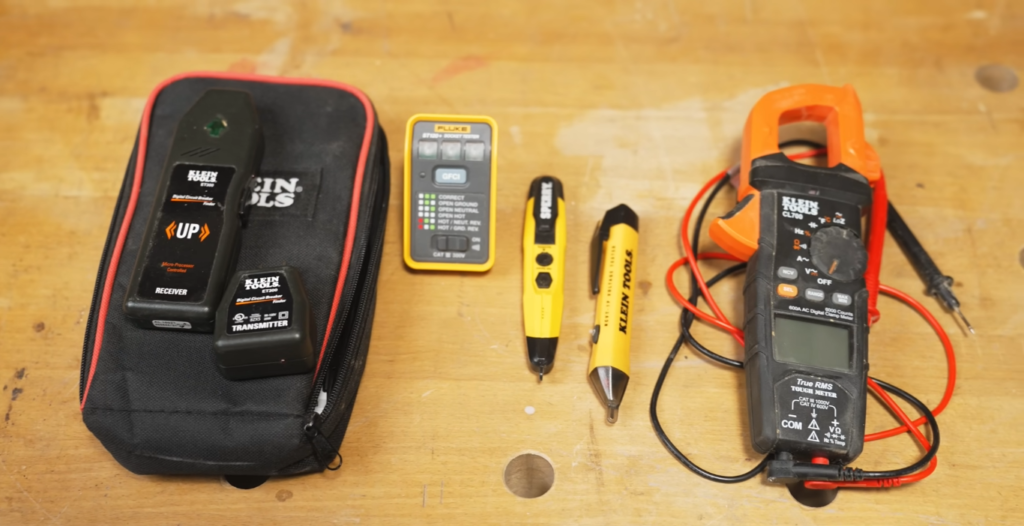
While some electrician tools can be used for a variety of tasks, it’s important to choose the right tool for the job at hand. Using the wrong tool for the job can not only lead to a sub-par result, but it can also be dangerous. That’s why it’s so important to choose your tools carefully and make sure you have the right ones for every job.
In the next sections, we’ll discuss different categories of electrician tools and the most essential items in each category. By the end of this article, you’ll have a better understanding of which tools are essential for your work as an electrician. This is going to be a lengthy article, so feel free to bookmark it for future reference.
List of the Main Tools Every Electrician Should Have
We will begin by discussing the general hand tools every electrician should have. These are the tools you’ll use most frequently, and they’re essential for completing a wide variety of tasks.
Insulated screwdrivers
One of the most important tools in an electrician’s toolkit is a good set of insulated screwdrivers. These are specially designed to prevent shock by insulating the handle and tip of the screwdriver. This is essential for working with live electrical circuits, as using a regular screwdriver could lead to serious injury.
The first question that might come to your mind when you think about insulated screwdrivers is whether or not they are actually necessary. After all, aren’t all screwdrivers basically the same? The answer to this question is a resounding no – insulated screwdrivers are an absolute necessity for any electrician, and here’s why.
First and foremost, insulated screwdrivers are designed to protect you from electrical shocks. This is achieved by the fact that the shaft of the screwdriver is made from an insulating material, typically rubber or plastic. This means that if you were to accidentally touch a live wire with the tip of your screwdriver, the electrical current would not be able to travel up the shaft and into your body.
Another reason why insulated screwdrivers are so important is that they help to prevent short circuits. If you were to use a regular screwdriver to tighten or loosen a screw that was connected to live wires, there is a chance that the metal shaft of the screwdriver could come into contact with both the positive and negative wires. This would then cause a short circuit, which could potentially lead to an electrical fire.
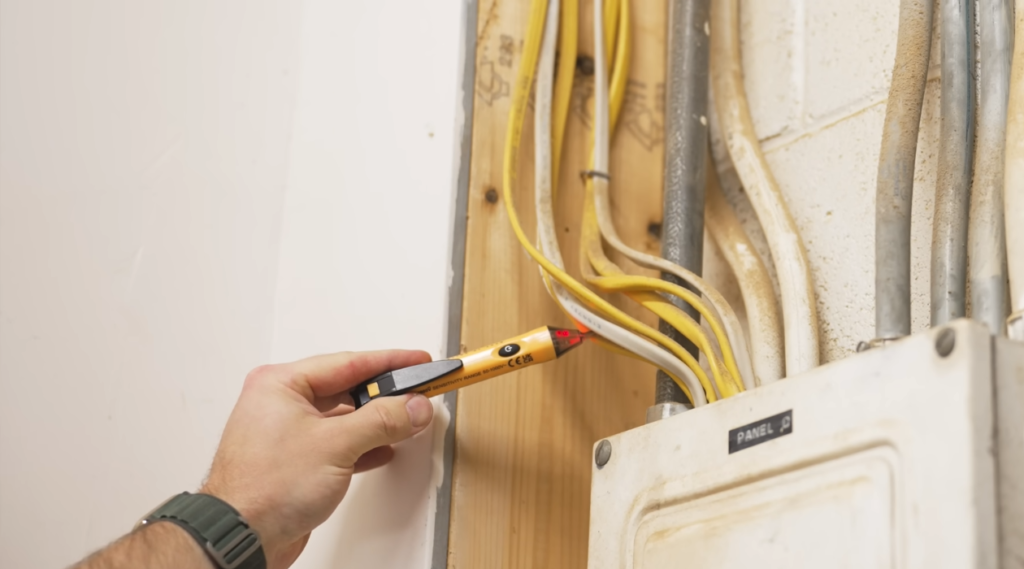
So, as you can see, insulated screwdrivers are an essential piece of equipment for any electrician. Not only do they keep you safe from electrical shocks, but they also help to avoid short circuits.
Different Types of Insulated Screwdrivers
There are three main types of insulated screwdrivers – those with a flat head, Phillips head and Allen wrenches. The type that you choose will depend on your own personal preferences and needs. Let’s take a look at each type in turn.
Flat head screwdrivers are one of the most basic and essential tools for electricians. These screwdrivers have a flat head that is used to insert or remove screws. The size of the flat head will depend on the size of the screws that you are working with. The only downside to flat head screwdrivers is that they can sometimes slip out of tight spaces.
Phillips head screwdrivers have a cross-shaped tip that is designed to fit into screws with a corresponding cross-shaped recess. This type of screwdriver is often used in electronics, as the Phillips head design helps to prevent stripping the screws.
Some screwdrivers can also have magnetic heads. This is a great feature if you often find yourself working in tight spaces, as the magnet will help to hold the screwdriver in place. And if you are working on circuit boards, these are lifesavers! You won’t have to worry about the screwdriver slipping out and ruining the delicate components.
Approved Voltage Indicators
When working with electricity, it’s important to always be aware of the voltage that you are dealing with. After all, one wrong move could result in a serious electrical shock. That’s why it’s essential to have an approved voltage indicator on hand at all times.
An approved voltage indicator is a device that is used to test for the presence of electricity. It consists of two probes – one red and one black – that are placed into the circuit. If there is electricity present, the indicator will light up. A voltage indicator can save your life by preventing you from accidentally touching a live wire.
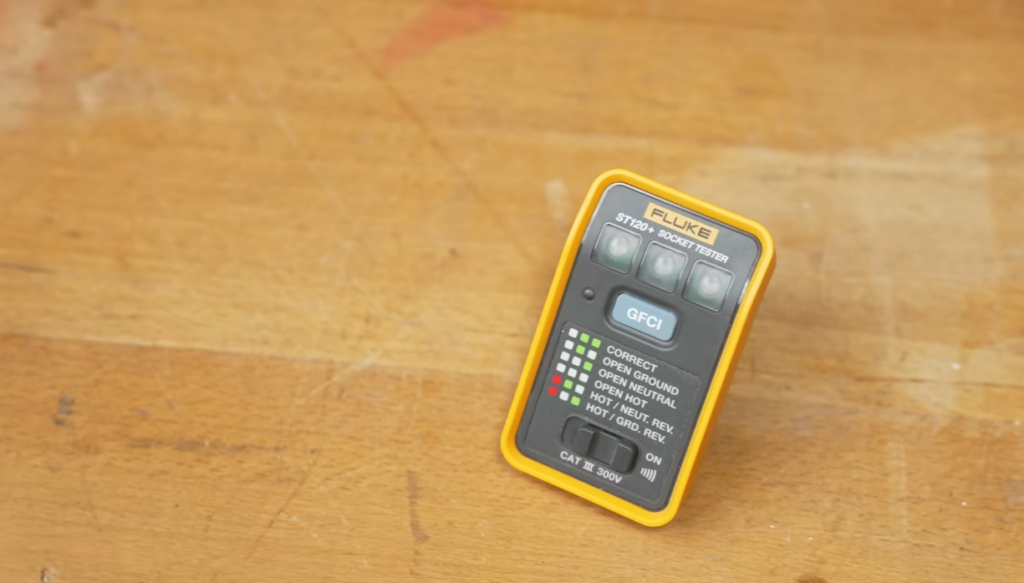
One of the great things about approved voltage indicators is that they can be used on both live and dead circuits. This means that you can use them to test for electrical shocks before you start work, as well as during and after work has been completed.
There are two main types of voltage indicators: non-contact and contact. Non-contact voltage indicators are the safest and most convenient type to use, as they allow you to test for voltage without coming into contact with the circuit. Contact voltage testers, on the other hand, require you to touch the circuit in order to test for voltage.
Most electricians prefer to use non-contact voltage indicators, as they offer the greatest margin of safety. However, there are some situations where a contact voltage tester may be the only option. For example, if you’re testing for voltage in an outlet that’s not easily accessible, you may need to use a contact voltage tester.
No matter which type of voltage indicator you use, it’s important to choose one that’s designed for electrical work. Many non-contact voltage indicators are designed for general household use and may not be sensitive enough to detect low voltages. Contact voltage testers, on the other hand, come in a variety of different styles, each designed for specific applications.
When choosing a voltage indicator, make sure to select one that’s suitable for your task. This will ensure accuracy and safety while you’re working.
Wire strippers
Wire strippers are one of the most important tools in an electrician’s tool kit. They’re used to remove the insulation from electrical wires so that the bare wire can be connected to other components.
There are many different types and sizes of wire strippers, so it’s important to choose the right one for you. The size of the wire you’re stripping will dictate the size of the wire stripper you need. There are also different types of wire strippers for different types of insulation.
If you’re working with multiple types of insulation, it’s a good idea to have a few different pairs of wire strippers on hand. That way, you’ll always have the right tool for the job.
Side cutters or pliers
Side cutters, also known as pliers, are one of the most basic and essential electrician tools. They’re used for a variety of tasks, including cutting and stripping wire, bending and shaping wire, and holding objects in place.
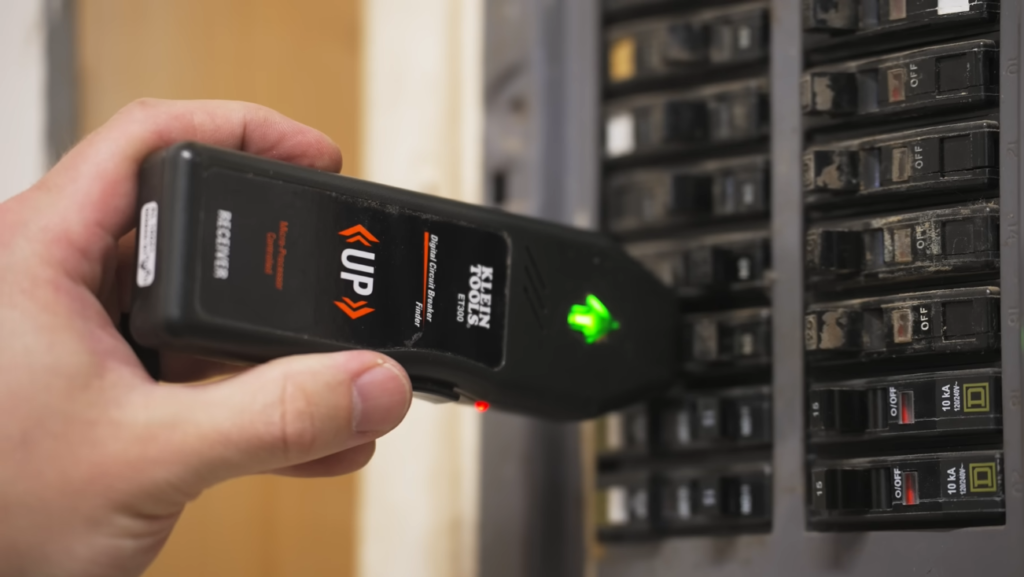
There are many different types of side cutters available on the market, and each of them has its own perfect niche. For example, if you’re going to be working with a lot of heavy-gauge wire, you’ll need a sturdier pair of side cutters than someone who primarily works with smaller gauge wires.
Generally speaking, however, a good quality pair of side cutters will suffice for most electricians. Just make sure they’re comfortable to use and made from high-quality materials.
Hammer
As an electrician, you will need to use a hammer from time to time. Whether you are driving nails into walls or pulling them out, a hammer is an essential tool for your trade. There are many different types of hammers available on the market, but as an electrician, you will want to choose one that is specifically designed for your needs. For example, a ball peen hammer is often used by electricians to help shape metal.
When buying a hammer, consider the comfort. You don’t want something that is too heavy or too light – you’ll want something that feels comfortable in your hand and that you can easily control.
Battery drills
Another essential tool for electricians is a good quality battery drill. This is a versatile tool that can be used for a variety of tasks, including drilling holes, driving screws, and more.
Battery drills are becoming increasingly popular as they offer cordless convenience and often provide more power than their corded counterparts.
Cordless convenience is the main benefit of using a battery drill. With no cords to get tangled or in the way, you can easily take your battery drill wherever you need it. This makes them ideal for use in tight spaces or on the go. Additionally, battery drills often pack more power than corded drills, making them ideal for tougher jobs.
When choosing a battery drill, it’s important to pay attention to the battery type. The two most common types are lithium ion (Li-ion) and nickel metal hydride (NiMH). Li-ion batteries are more expensive but they offer a longer runtime and don’t require as much maintenance as NiMH batteries.
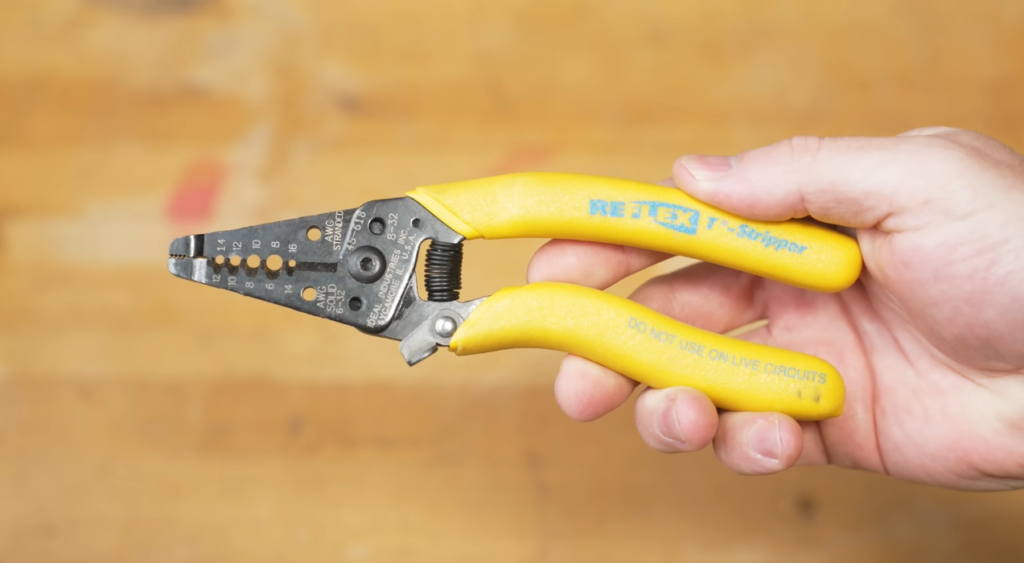
When choosing a battery drill, it is important to consider your needs. First, decide what type of projects you will be using the drill for. If you only need to drill small holes, a lower-powered battery drill should suffice. However, if you plan on doing more heavy-duty work, you will need a more powerful battery drill. Additionally, consider the size and weight of the drill. If you plan on using the drill in tight spaces or on the go, you will want to choose a lighter and smaller model. There are many great brands of battery drills on the market today. Some of the top brands include Makita, DeWalt, and Milwaukee. These brands offer a variety of battery drills to choose from, so you can find the perfect one for your needs.
Drill bits
While drills are important to the electrician’s toolkit, so is having a good set of drill bits. This is because many electrical projects require the drilling of holes through walls, ceilings, and floors in order to run new wiring or install outlets or other fixtures.
As an electrician, you will be dealing with a lot of different materials, including metal, plastic, and even concrete. Having a good set of drill bits will allow you to quickly and easily drill through these materials without having to worry about damage to the material or your hands.
Without a good set of drill bits, it would be very difficult to complete these projects in a timely and efficient manner. There are a variety of different types of drill bits available on the market, so it is important to choose the right ones for the job at hand. For example, if you will be drilling through brick or concrete, you will need to purchase masonry drill bits.
Electrical wall chasers
Wall chasers are one of the most versatile tools an electrician can have. By definition, a wall chaser is a power tool that is used to cut grooves into masonry, stone or plasterboard walls. This is usually done in order to run electrical wiring through the wall without having to drill numerous holes.
While this may seem like a relatively simple task, it is actually quite difficult to do by hand. Not only does it require a great deal of precision, but it also takes a lot of time and effort. A wall chaser makes the job much easier and faster, allowing you to get on with other tasks.
Electrical wall chasers are much more effective than old-school hammers and chisels. Not only do they cut through material much faster, but they also produce cleaner and more precise cuts. This is vital when running electrical wiring, as even the smallest of imperfections can cause problems down the line.
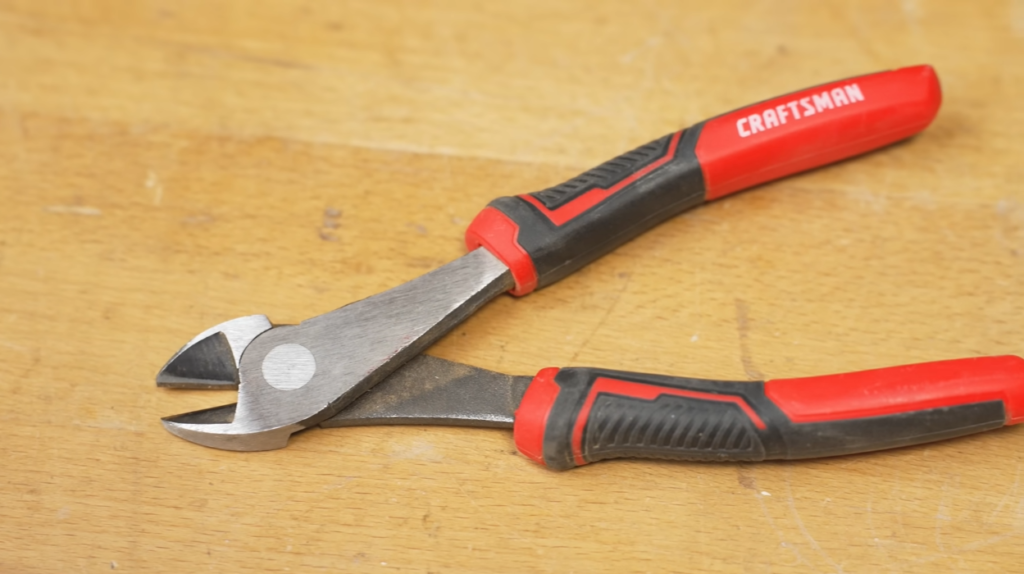
Multi tools
If you’re looking for a versatile tool that can do it all, then look no further than the multi tool.
The most common attachments on multi tools are pliers, wire cutters, and screwdrivers. However, you can also find models that come with saws, files, knives, and much more. Basically, if there’s a task you need to do, chances are there’s an attachment for your multi-tool that can help you get the job done.
One of the best things about multi tools is that they’re extremely compact and easy to carry around. This makes them ideal for electricians who are always on the go and need to be able to access their tools quickly and easily.
Draw tape
A draw tape is a type of electrical tape that is used to create an electrical connection between two points. It is made of a conductive material that can be easily wrapped around conductor wires. Draw tapes are typically used to connect two pieces of equipment together, or to connect a piece of equipment to a power source.
Draw tapes are often called fish tapes, because they are used to “fish” wires through conduit. A fish tape is a long, flexible strip of metal or fiberglass that is used to pull conductor wires through a conduit. The end of the fish tape is attached to the conductor wire, and the other end is attached to a reel. The reel is then fed through the conduit until the fish tape reaches the other side.
Draw tapes are available in different widths and thicknesses, depending on the application. They are also available in different lengths, from 1 foot (30 cm) to 100 feet (30 m).
Any electrician worth their tool belt will have a good selection of draw tapes on hand, as they are an essential part of any electrical job.
Head and magnetic torches
As an electrician, you will often find yourself working in dark and confined spaces. A head torch is an essential piece of equipment that will help you see what you are doing, whilst keeping your hands free to work.
There are many different types and styles of head torch available on the market, so it is important to choose one that is comfortable and suits your needs. Look for a head torch with a bright LED light, as this will give you the best visibility. Many head torches also have adjustable straps, so you can find the perfect fit. Either way, a head torch frees up your hands so you can work more efficiently and safely.
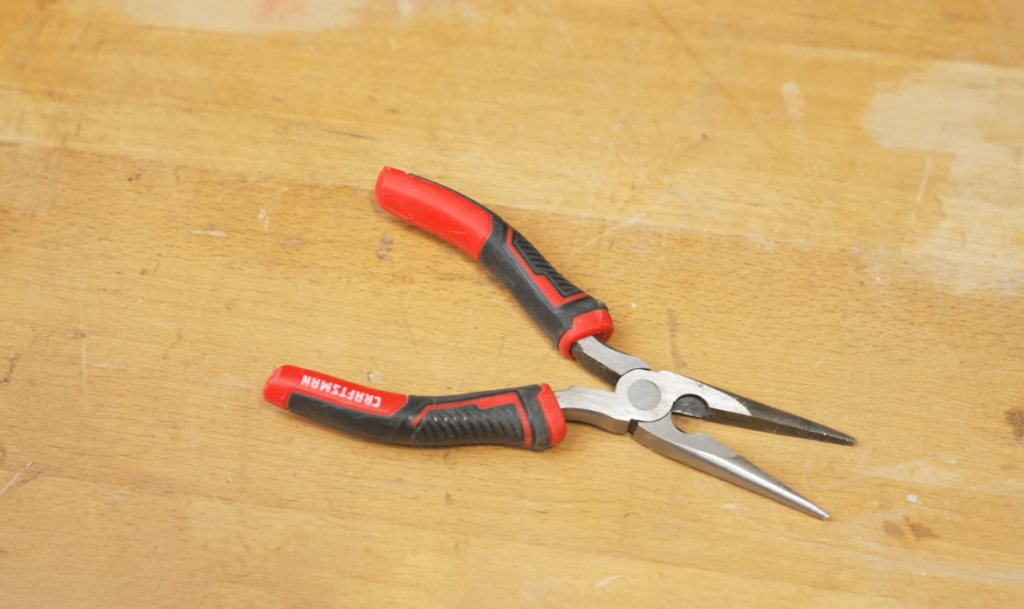
A magnetic torch is another option you have. It comes in handy when you need both hands free and still be able to see what you’re doing. The magnet on the bottom of the torch will stick to most metal surfaces, freeing up your hands for other tasks.
Splicing connectors
A splicing connector is a device used to join two or more electrical wires together. There are many different types of splicing connectors, but the most common are twist-on wire connectors, also known as wire nuts.
The main benefit of splicing connectors is that they allow you to join the wires without the need of soldering. This makes the whole process much quicker and easier, particularly when you need to make repairs or add new wiring to an existing circuit.
Splicing connectors are pretty cheap and easy to find, so there’s really no excuse not to have a few in your toolbox.
There are however, a few potential downsides to using splicing connectors. The biggest one is that if not installed correctly, they can create a weak connection which could lead to electrical problems further down the line.
Terminal block
Another tool that should definitely be on your list is a terminal block. A terminal block is a device used to connect two or more electrical wires together. They come in a variety of sizes and configurations, but they all serve the same basic purpose.
Terminal blocks are extremely versatile and can be used for a wide range of applications. For example, they can be used to create temporary splices, to terminate conductors, or to provide mechanical support for electrical components.
There are many different types of terminal blocks available on the market, but the two most common are screw-type and spring-type. Screw-type terminal blocks are the most popular type used in residential and commercial applications. They are easy to use and provide a strong connection between the wires. Spring-type terminal blocks, on the other hand, are designed for high-current applications.
Knockout punch set
As an electrician, you need to be well-equipped with the proper tools to do your job efficiently and safely. A knockout punch set is one of the must-have tools that every professional electrician needs. This type of punch set is designed to create clean holes in metal surfaces without damaging the surrounding area.
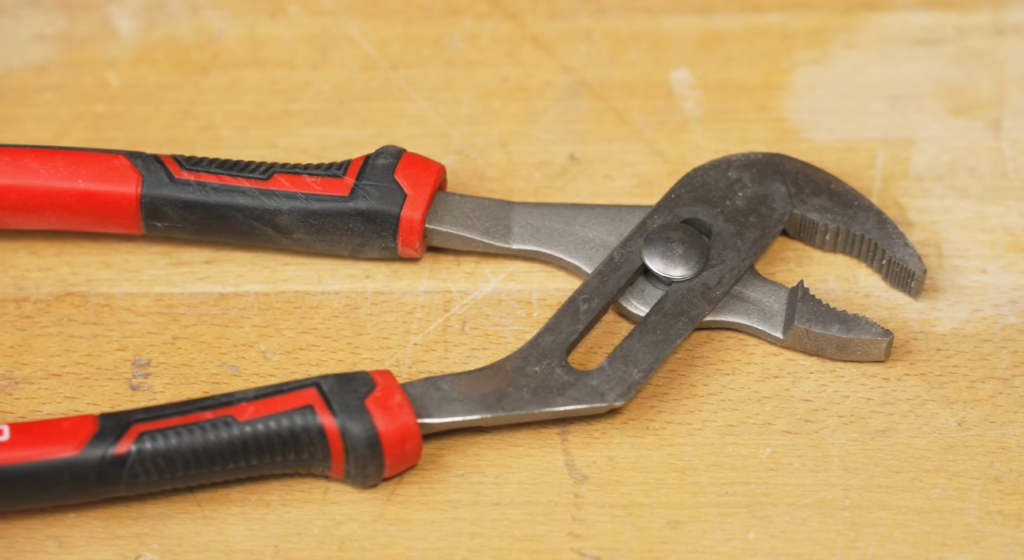
The main advantage of using a knockout punch set is that it can save you a lot of time and effort compared to other methods of creating holes in metal. For instance, if you need to create a hole in a steel plate, you can use a drill bit to make the initial hole. However, drilling can be very slow and tedious, especially if you need to make multiple holes. With a knockout punch set, you can easily and quickly create the same size hole in a fraction of the time.
Another advantage of using a knockout punch set is that it can help you achieve a cleaner and more professional finish. When you use a drill bit to make holes, the edges of the holes tend to be jagged and uneven. This can cause problems when you try to install electrical wiring or other components in the holes. With a knockout punch set, the holes will have clean and smooth edges, which will make your work look more professional. [1], [2], [3], [4]
Multi Functional Testers
A professional electrician will definitely want to have a reliable and sturdy multi functional tester. These testers are used to measure a variety of parameters such as voltage, current, and resistance. They are also known as all-in-one testers or combo testers. These devices come in handy when you need to troubleshoot electrical problems.
Most multi-functional testers have a large digital display that makes it easy to read the measurements. Some of them even have backlit displays for easy viewing in low-light conditions. Multi functional testers usually have a built-in flashlight so you can see what you’re doing when there’s no other light source available.
There is a large selection of multi functional testers available on the market and each of them has different features. We will go over the most popular types of testers so you can decide which one is the best for your needs.
Multimeter
As an electrician, a multimeter is one of the most important tools you can have. It’s used to measure voltage, current and resistance in electrical circuits. A good multimeter will have a large digital display and a variety of functions including AC and DC voltage measurement, amperage measurement, resistance measurement and continuity testing.
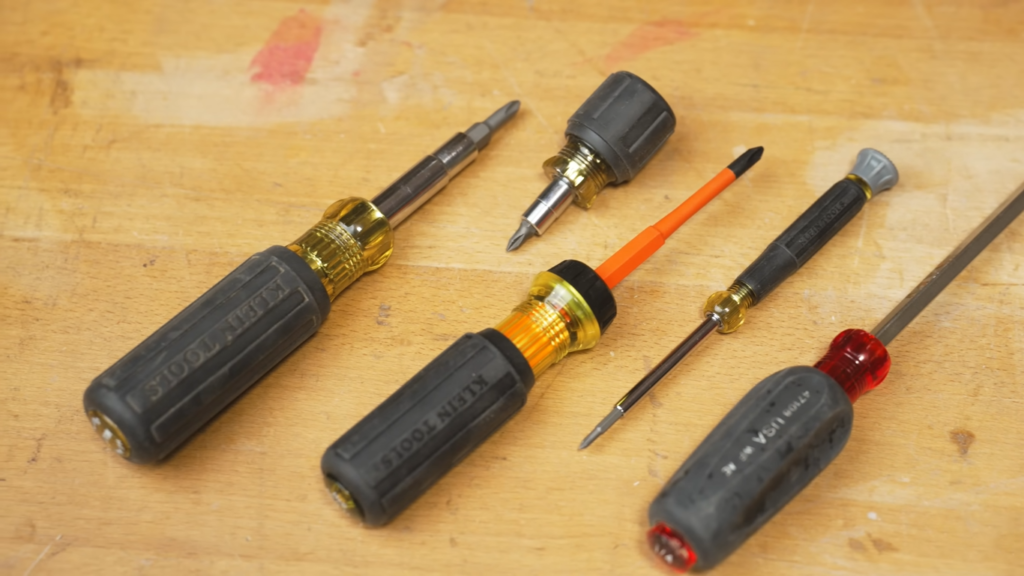
While there are both analog and digital multimeters available, digital multimeters are more accurate and easier to read. They also have a built-in feature that allows you to take manual readings or automatically record measurements over time.
When shopping for a multimeter, look for one with high accuracy and a wide range of functions. You should also make sure it has a rugged design so it can withstand being dropped or knocked around.
Voltage tester
A voltage tester is another must-have tool for electricians. It allows you to test for the presence of an electrical current, as well as measure the strength of the current. This is a critical tool when working with electrical circuits, as it can help you avoid dangerous situations.
A non-contact voltage tester is a specialized type of voltage tester that does not require you to touch the circuit in order to test it. These testers use sensors to detect the electrical current, so they are ideal for situations where you cannot or should not touch the circuit.
For the excellent safety of the workers, a voltage tester is an essential instrument that every electrician must consider buying.
Circuit analyzer
As an electrician, you need to have a range of tools in your arsenal to be able to properly do your job and troubleshoot any issues that may come up. One tool that you should definitely consider investing in is a circuit analyzer.
A circuit analyzer is a device that helps you test electrical circuits to find faults and diagnose problems. This tool is essential for any electrician as it can help save time and money by quickly identifying problems and fixing them before they become bigger issues.
Circuit breaker finder
Another option you have is a circuit breaker finder. This simple tool helps you locate the correct breaker in an electrical panel, so you can turn it off or on as needed.
There are two main types of circuit breaker finders: those that use sound and those that use light. Sound-based models emit a tone that gets louder as you get closer to the right breaker, while light-based models have a light that gets brighter when you’re close. Some lights signal with different colors.
Earth ground tester
An earth ground tester, also called a soil resistivity tester or ground resistance tester, is an electronic device used to measure the conductivity of the earth. It is used to determine the adequacy of grounding systems, such as those used in electrical power distribution and telecommunications.

The tester consists of two electrodes that are placed in the ground at different depths. A current is passed between the electrodes and the resistance is measured. The conductivity of the soil is then calculated from the measured resistance.
Soil resistivity varies depending on the type of soil and its moisture content. If you are testing for grounding of an electrical system, it is important to know the resistivity of the soil so that the system will be properly grounded. [1], [2], [3], [4]
Additional Tools and Equipment
Besides the essential electrician tools that we’ve listed above, there are a few other items that you may need depending on the job at hand. The main purpose of these is to improve the safety and efficiency of your work, so it’s definitely worth considering investing in them.
Some of the most popular additional tools and equipment used by electricians include:
Tool belt
A tool belt is a specialized belt worn by electricians to hold various tools and equipment. The electrician’s tool belt is often equipped with loops and holders for common hand tools, as well as pouches and holsters for larger items such as levels, tape measures, and flashlights.
A tool belt will definitely make your life as an electrician much easier, but it’s important to choose the right one. There are many different types and styles of tool belts on the market, so it’s important to do your research before making a purchase.
Tape measure
Tape measure is one of the most important tools for an electrician. It is used to take measurements of various objects such as pipes, wires, and conduits. This tool helps in determining the length, width, and circumference of an object. And of course, tape measure also helps in calculating the space between two objects.
There are a few things to look for when purchasing a tape measure. First, make sure that the tape measure is at least 25 feet long. This will ensure that you can easily measure most electrical applications. Second, look for a tape measure with a locking mechanism. This will prevent the tape from retracting back into the housing while you are working.
Flashlight
There’s no denying that a flashlight is an essential piece of equipment for any electrician. After all, being able to see what you’re doing is critical when working with electricity. But why is a flashlight such a must-have tool for electricians specifically?
Well, there are a few reasons. First, electricians often work in dark or dimly lit spaces. This could be due to the nature of the job, such as when working in an attic or crawl space, or because the power is off in the area they’re working in.
In either case, having a good flashlight can make a world of difference. It allows you to see clearly what you’re doing, which is important when working with electricity.
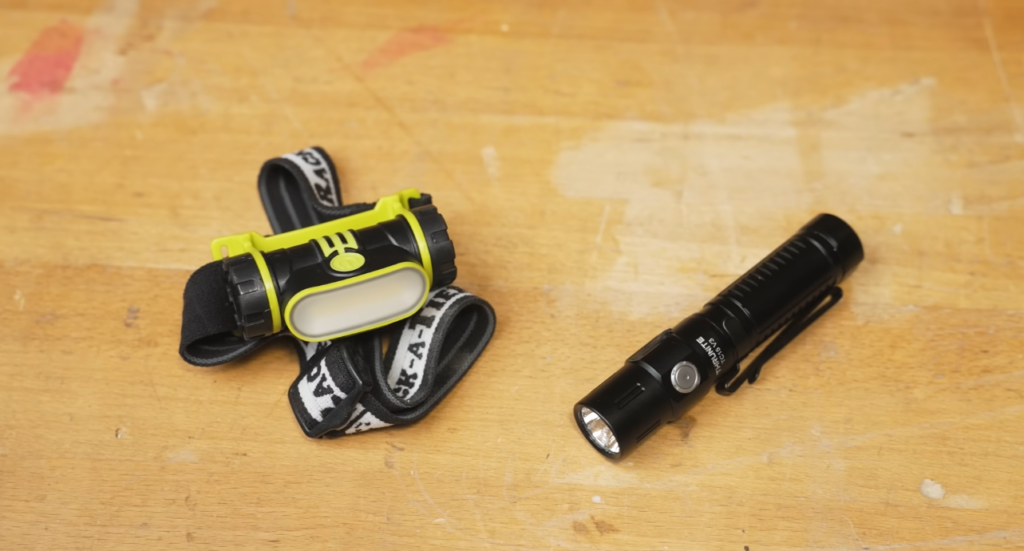
Razor knife
Razor knives are one of the most important tools for electricians. They are used to strip wires, cut through insulation, and make other precision cuts. A good quality razor knife will have a sharp blade that is easy to control. It should also be comfortable to hold and have a durable handle that won’t slip in your hand.
Duct tape
Another popular item on electrician tool lists is duct tape. It’s not just for holding together air ducts, as the name suggests. Duct tape can be used for a variety of tasks, including:
- Securing cords and cables
- Temporarily repairing electrical insulation
- Marking areas that need attention
Duct tape is also useful for keeping your work area clean and organized. When you’re done with a project, simply wrap up any cords or cables with duct tape to keep them tidy and out of the way.
Level
Another tool you will often hear electricians talk about is the level. This tool is extremely important for a number of reasons. First, when you are working with electrical conduit, you need to make sure that it is level so that your wire runs will be level as well. If the conduit is not level, then your wires could end up being damaged or even cause a fire.
The second reason why a level is so important is because it helps you to install outlets and switches correctly. If you do not install them, then they will not work correctly and could present a safety hazard.
Finally, a level can help you to ensure that the light fixtures you install are also level. This ensures that your project will look its best and function properly. [1], [2], [3], [4]
Safety Equipment
Now that we have covered some of the must-have tools for electricians, let’s talk about safety equipment. Safety is always the number one priority when working with electricity, so it’s important to have the right safety gear.
Gloves
Gloves are the first must-have on any electrician’s list for a reason- they protect you from getting shocks. When dealing with electrical wiring and equipment, there is always the potential for an accidental shock. Wearing gloves made of an insulating material will help to protect you from this hazard.
Rubber gloves are the most common type of gloves worn by electricians. They are durable and provide a good level of protection from shocks. However, they can be bulky and can make it more difficult to work with small wires and components.

Make sure to choose gloves that fit snugly so that there is no gap between the material and your skin. This will help to ensure that you have the best possible protection against shocks.
Goggles
One of the most important things an electrician can do is to protect their eyesight. This means wearing proper eye protection at all times, even when working with small wires or doing simple tasks. Goggles are a must-have for any electrician because they will protect your eyes from flying debris, dust, and other harmful substances.
Rescue rods
The next item on the list of essential electrician tools are rescue rods. These life-saving devices are used to quickly and safely pull your coworkers away from downed power lines.
Rescue rods are made of sturdy, non-conductive materials like fiberglass or Kevlar and they come in various lengths to accommodate different situations. Most electricians keep at least two rescue rods on hand at all times, just in case.
Because of this rescue rods are also a must-have for anyone who works around live power lines on a regular basis, such as tree surgeons, roofers, and utility workers.
Insulated matting
Insulated matting is one of the most important tools an electrician can have. It protects you from shock and static discharge, and it helps to prevent electrical fires. Insulated mats are made of rubber or other insulating materials, and they come in a variety of thicknesses. They’re also available with different levels of insulation, so you can choose the right mat for your needs.
As you may know, when you work with electricity, you need to be very careful to prevent shocks. Insulated matting helps protect you from electrical shocks in two ways. First, it provides a physical barrier between you and the electricity. Second, it acts as an insulator, meaning it prevents electrons from flowing through it.
While this is not an exhaustive list, these are just a few of the most important tools and pieces of safety equipment that every electrician should have. [1], [2], [3], [4]
FAQ
Which tools are used for professional wiring?
There are a variety of tools that electricians use for professional wiring projects. Some of the most common include:
- Wire strippers: These are used to strip the insulation off of electrical wires so that they can be properly connected.
- Wire cutters: These are used to cut electrical wires so that they can be properly connected.
- Multimeter: This is a tool that is used to measure voltage, current, and resistance in an electrical circuit.
- Voltage tester: This is a tool that is used to test for the presence of voltage in an electrical circuit.
- Continuity tester: This is a tool that is used to test for the continuity of an electrical circuit.
Is a multimeter a sufficient tester for an electrician?
A multimeter is an essential piece of equipment for any electrician. It is used to measure voltage, current, and resistance. Additionally, a multimeter can be used to test for continuity and test diodes and transistors. So yes, a multimeter is a sufficient tester for an electrician.
What drills do electricians use?
There are a few different types of drills that electricians use, depending on the job they’re working on. For example, cordless drills are great for jobs that require a lot of maneuverability, while larger and more powerful drills are better suited for projects that require more torque and power.
Some of the most common drill bits that electricians use include:
- Drill bit sets
- Hole saws
- Masonry bits
- Step drill bits
What are some tools that are deemed important in maintaining electrical safety?
There are a few different tools that are important for maintaining electrical safety. First, a voltage tester is an absolute must-have. This tool helps to ensure that circuits are correctly wired and that there is no current running through them. Next, an ammeter is also crucial for electricians. This device measures the strength of the current flowing through a circuit. Finally, a voltmeter is used to measure the potential difference between two points in a circuit. By having these three essential tools, electricians can stay safe while working on electrical systems.
What is the most important tool for an electrician?
There is no definitive answer to this question as every electrician has their own preferences and opinions on what the most important tool is. However, some essential tools that every electrician should have are a multimeter, wire strippers, pliers, and a screwdriver set.
Useful Video: 24 MUST HAVE DIY Electrical Tools You Can’t (Or Won’t) Live Without
Conclusion
As an electrician, you will need a variety of tools to complete your job. The most important thing is to have the right tool for the job at hand. With the right tools, you will be able to complete any electrical job, no matter how big or small.
In this article, we have gone over some of the most important electrician tools that you will need in your toolkit. We have also included a few extra tools that can come in handy, depending on the job at hand. And of course we couldn’t forget about the safety gear!
No matter what electrical job you are tackling, be sure to have the right tools on hand to get the job done right. Hopefully, this guide has helped you understand which tools are essential for electricians. Do you have any other must-have electrician tools that we missed? Let us know in the comments below!
References
- https://www.workiz.com/blog/electrical-work/top-15-essential-electrician-tools-for-pros/
- https://www.tradeskills4u.co.uk/posts/essential-tools-for-electricians
- https://asktheelectricalguy.com/electrician-tools-list/
- https://optimoroute.com/electrician-tools/





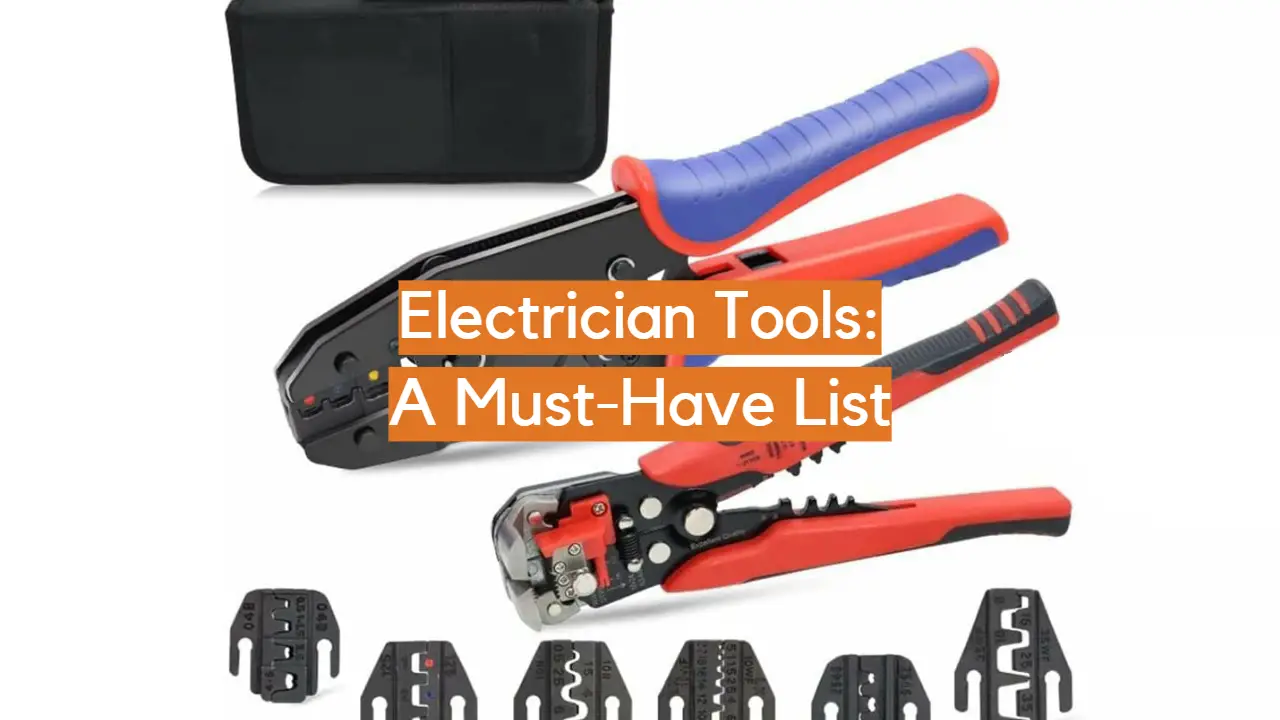




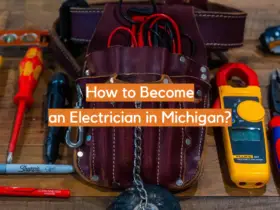
Leave a Reply